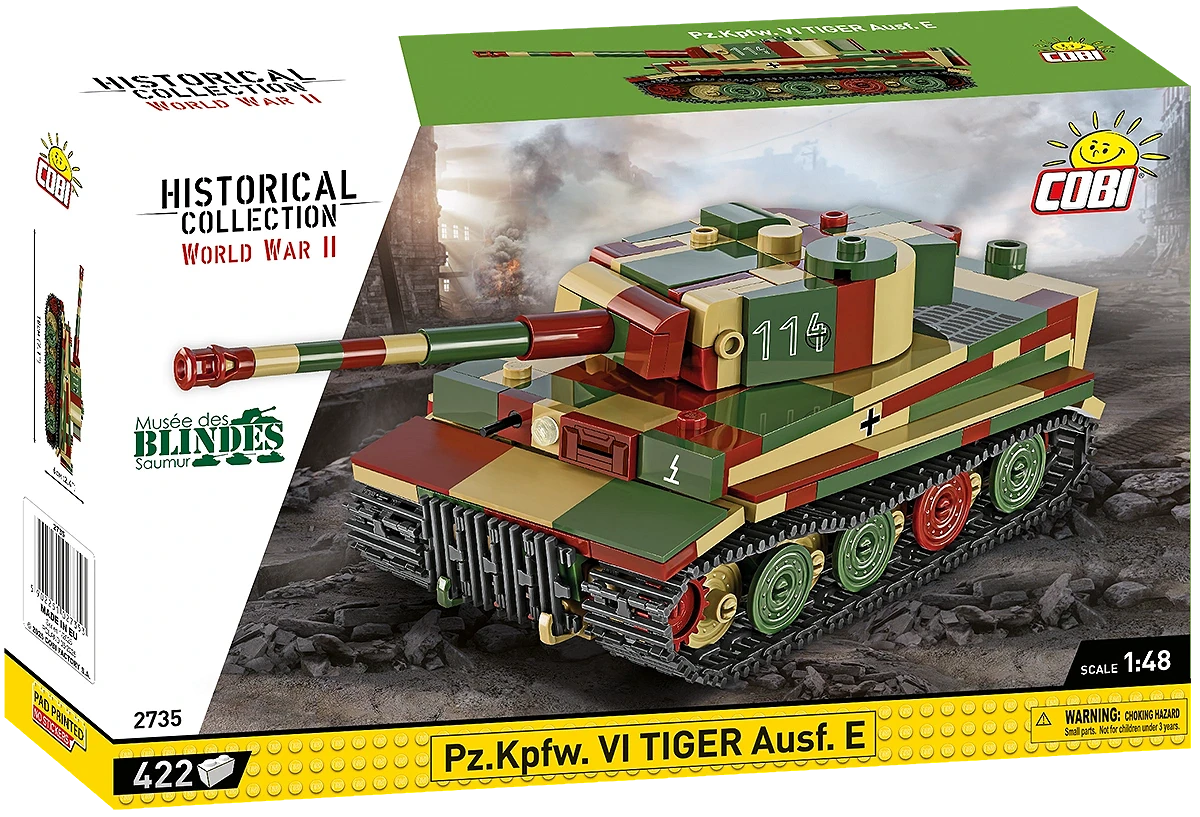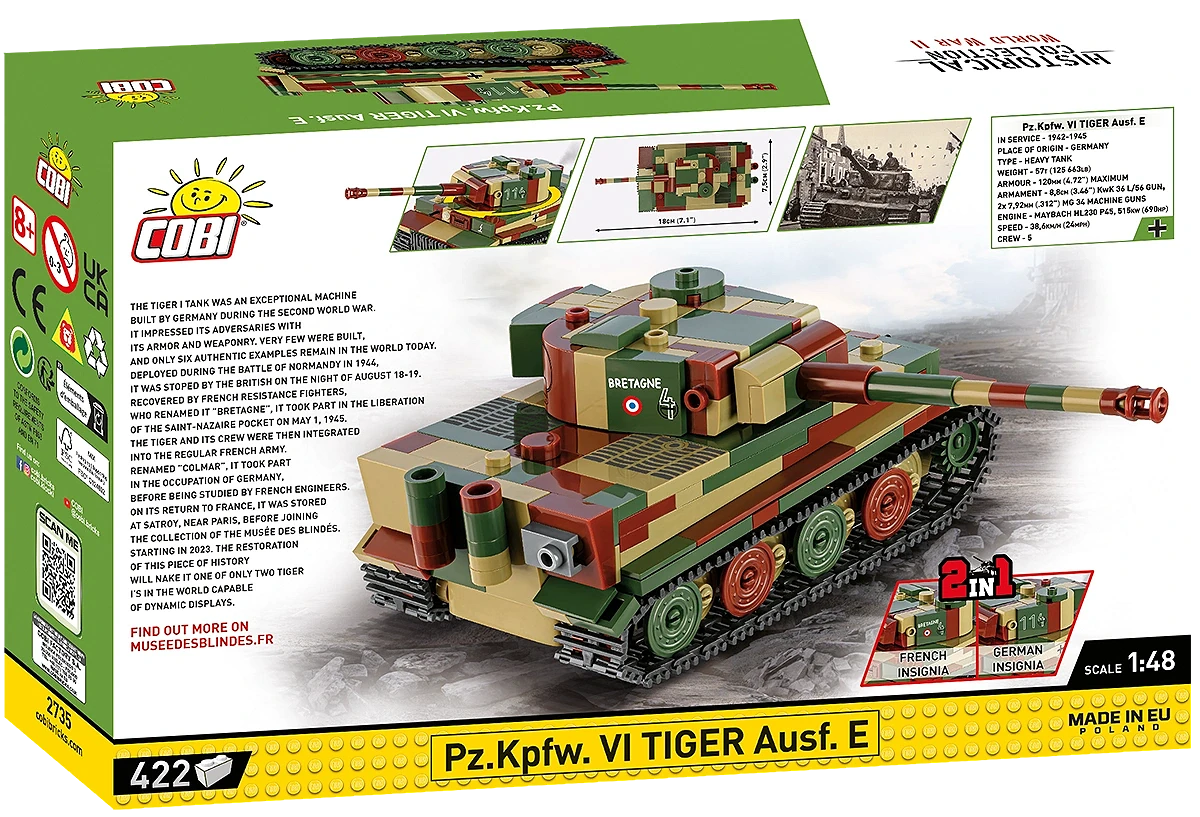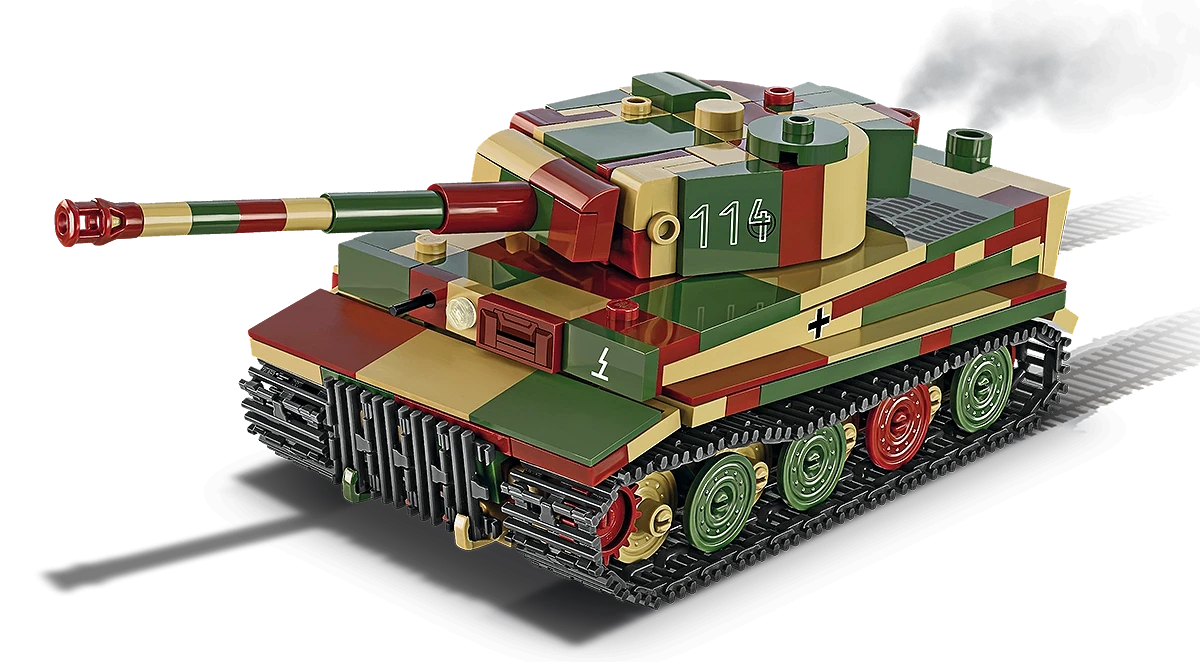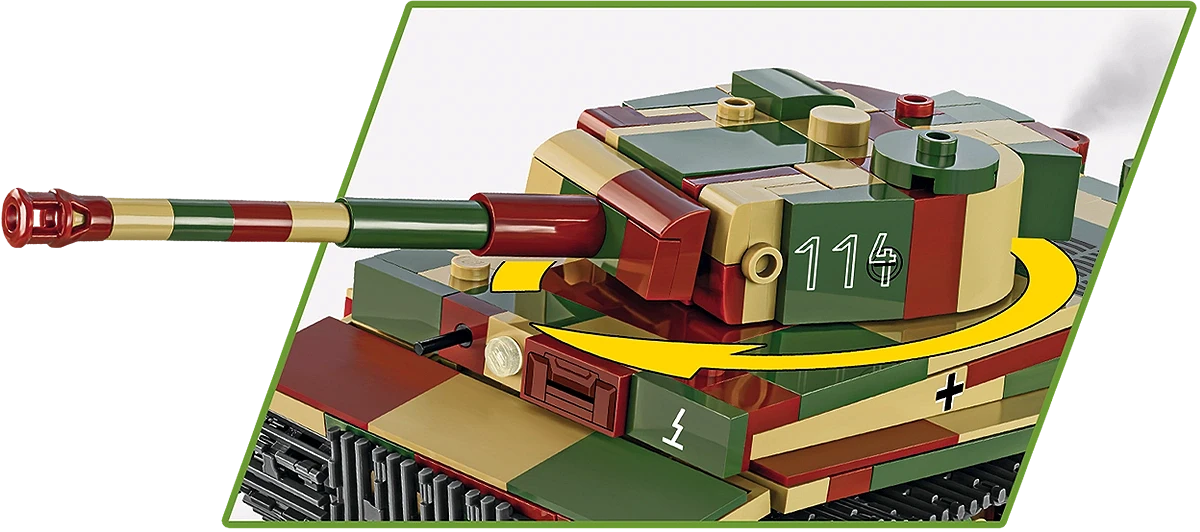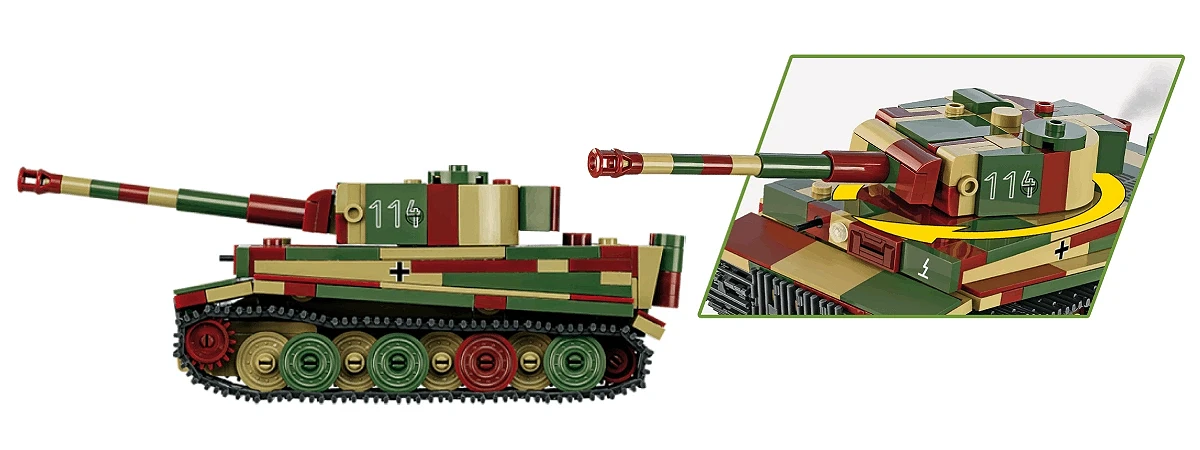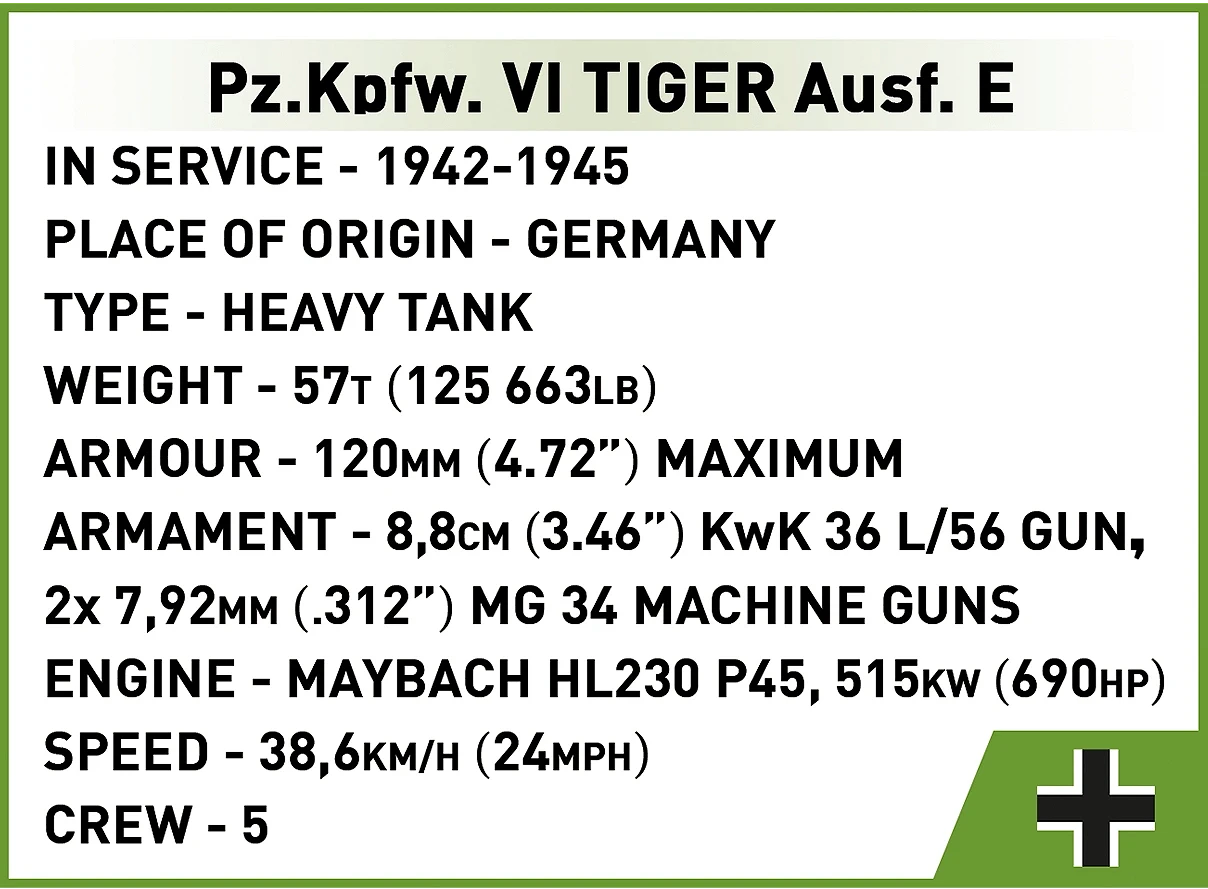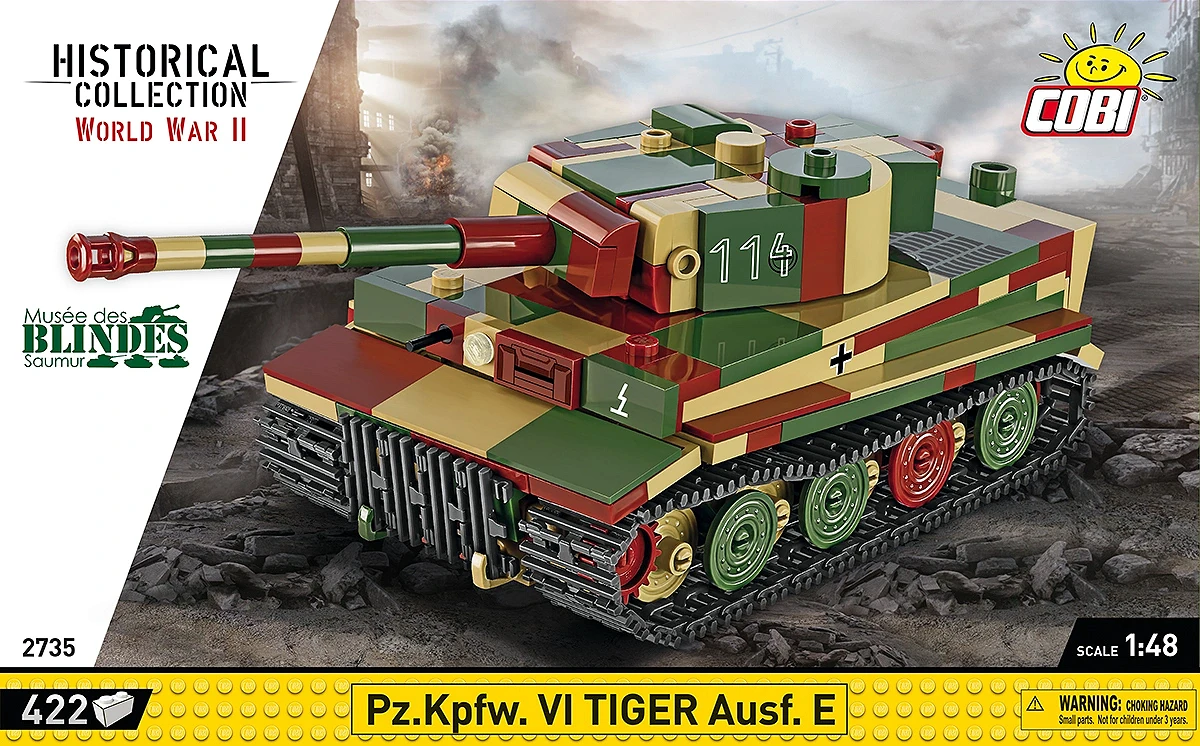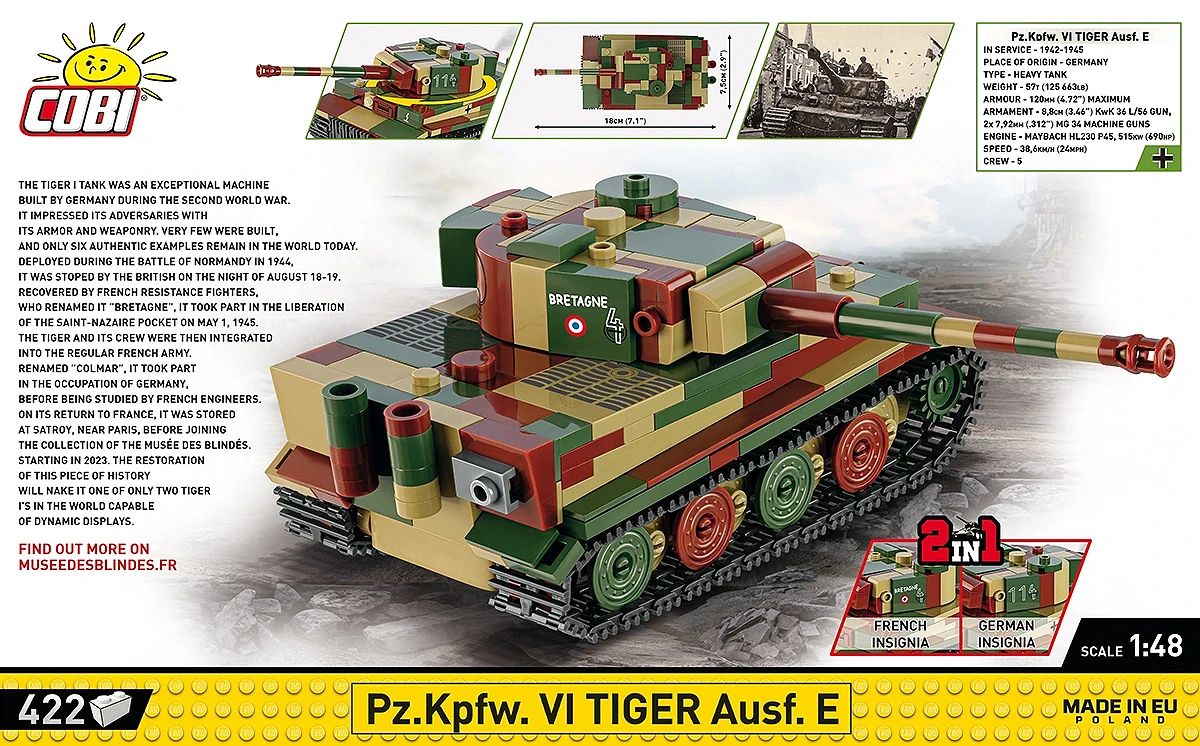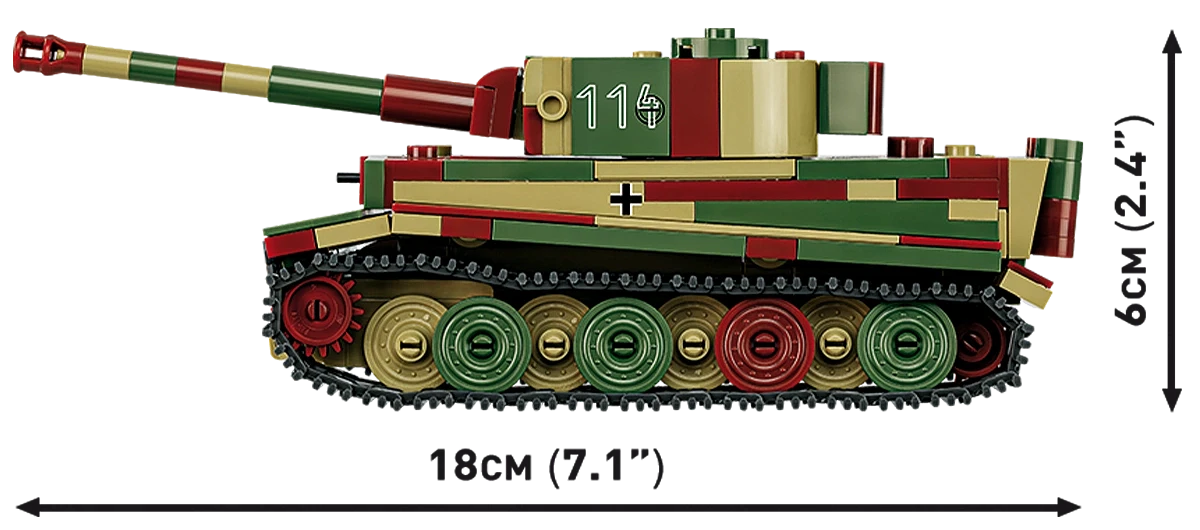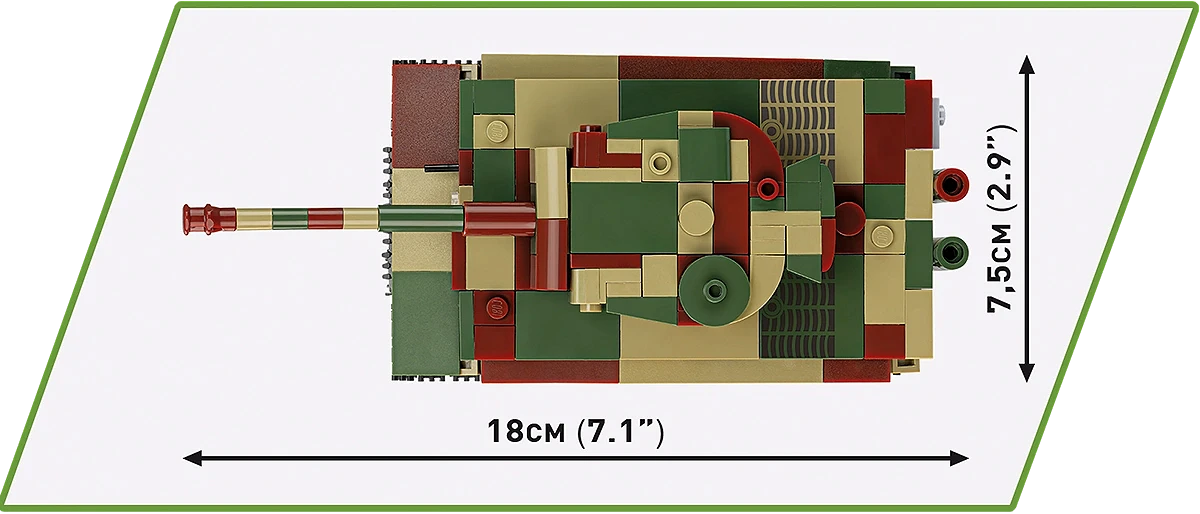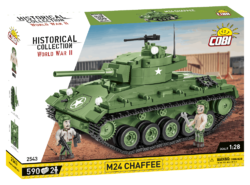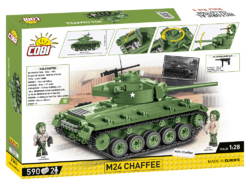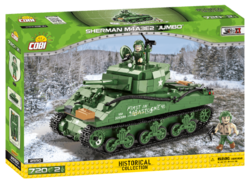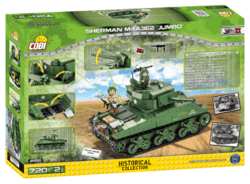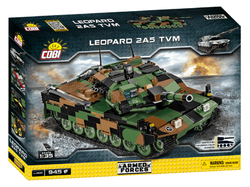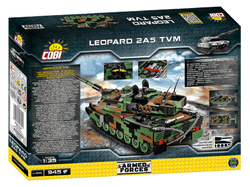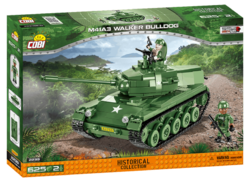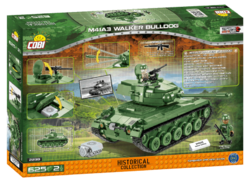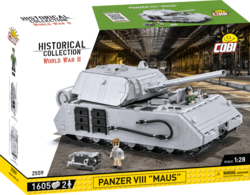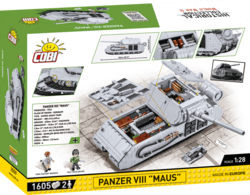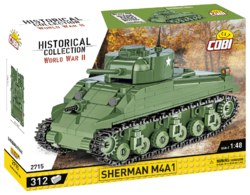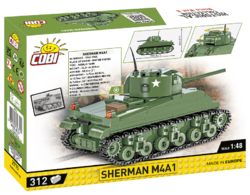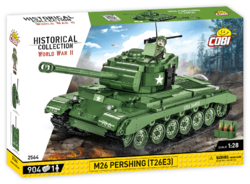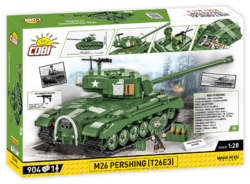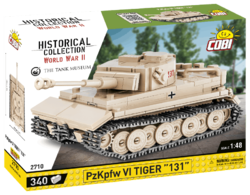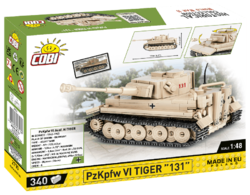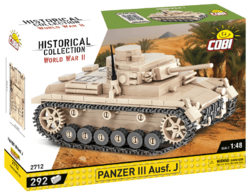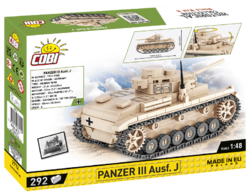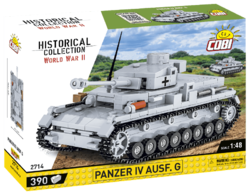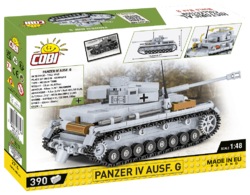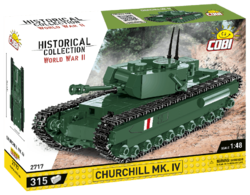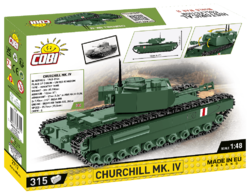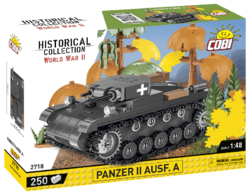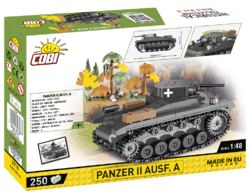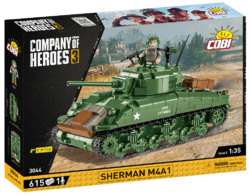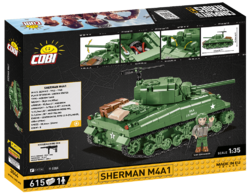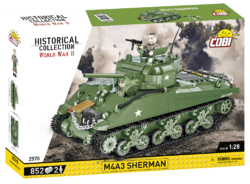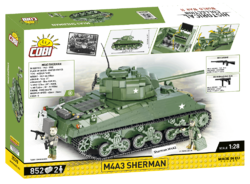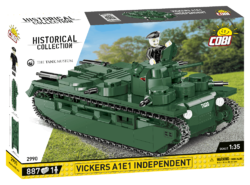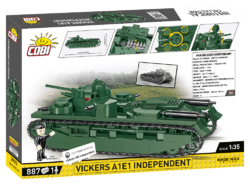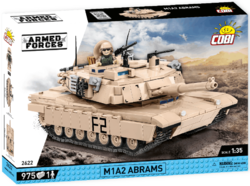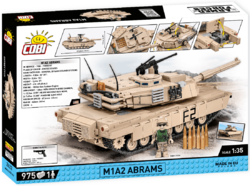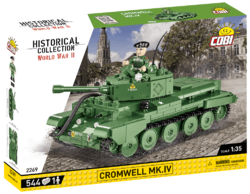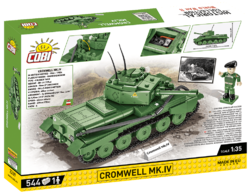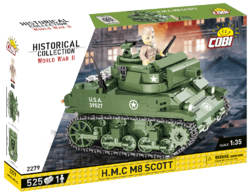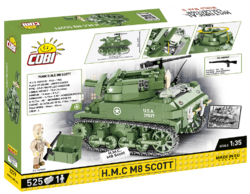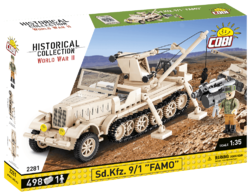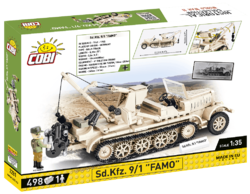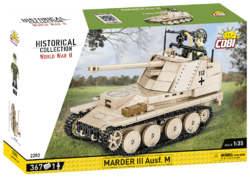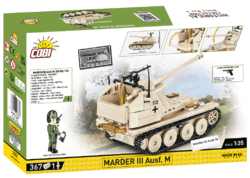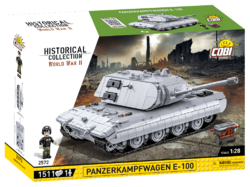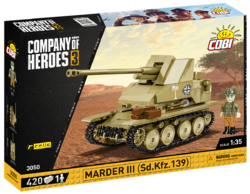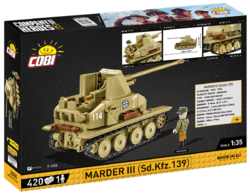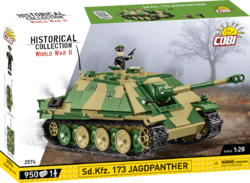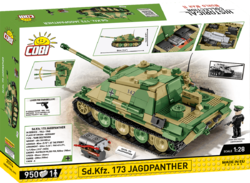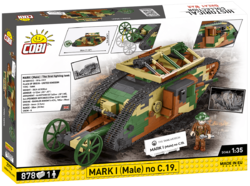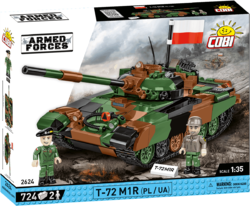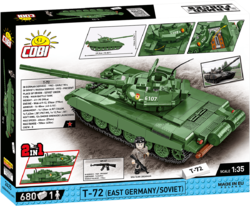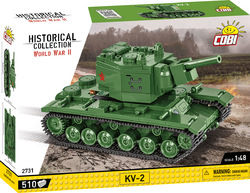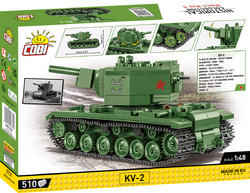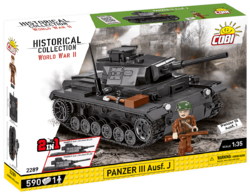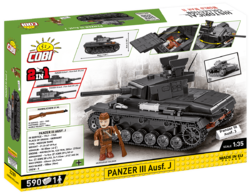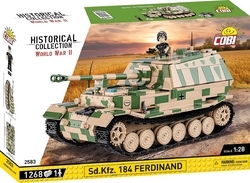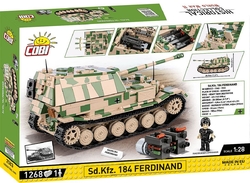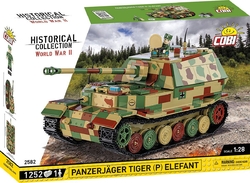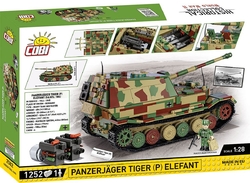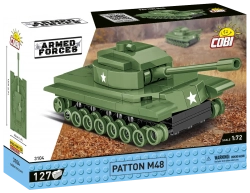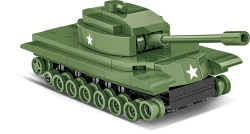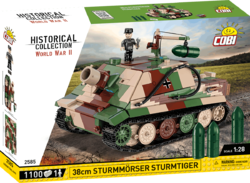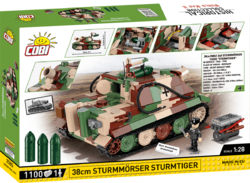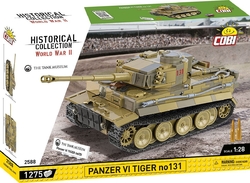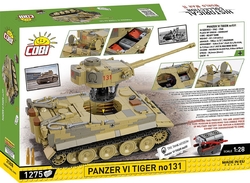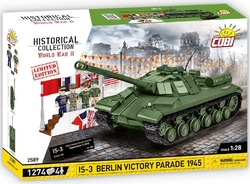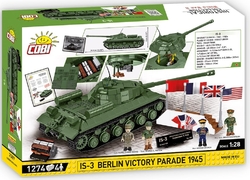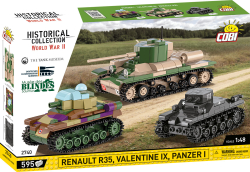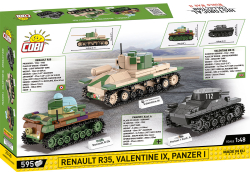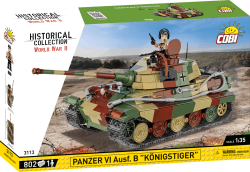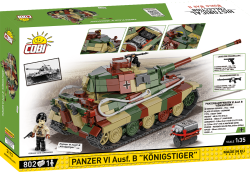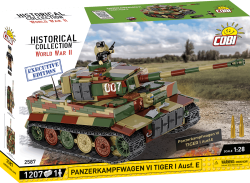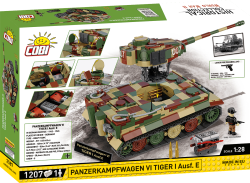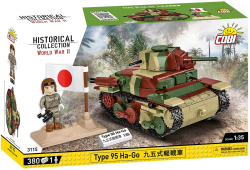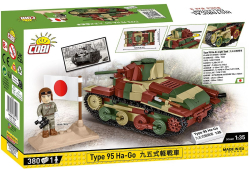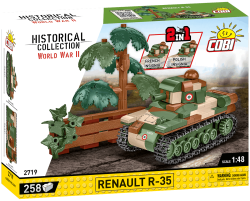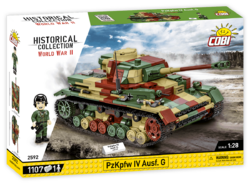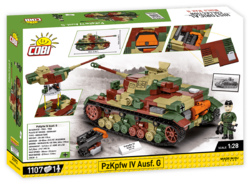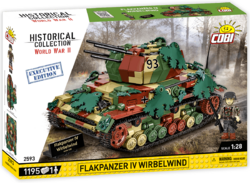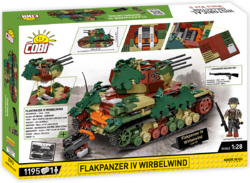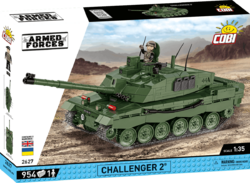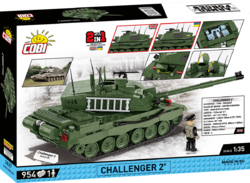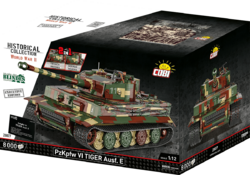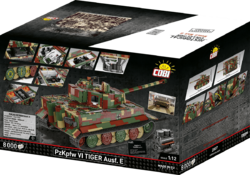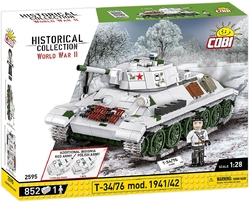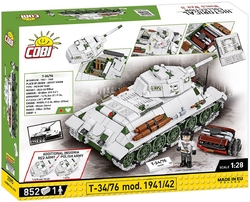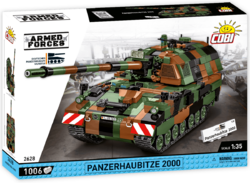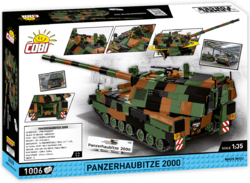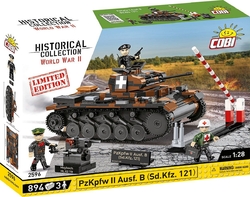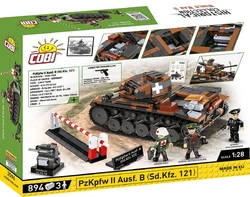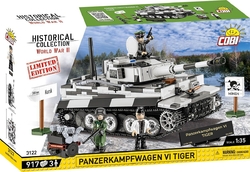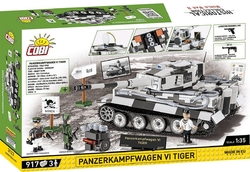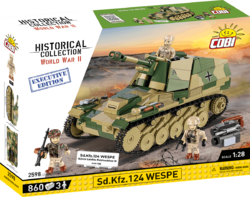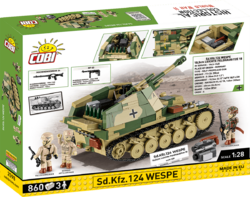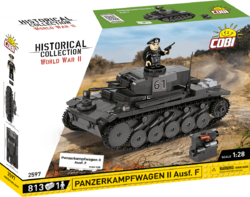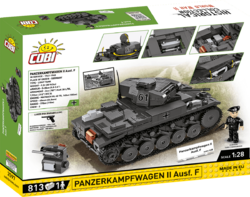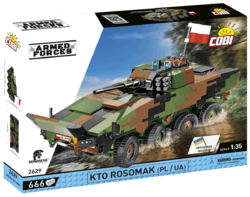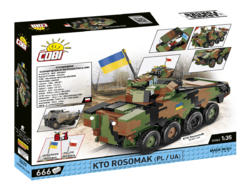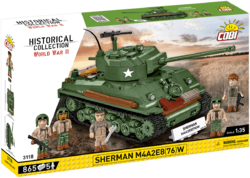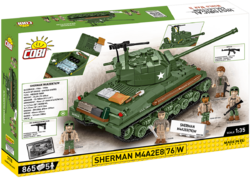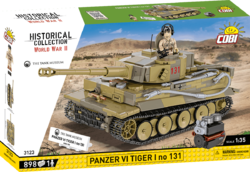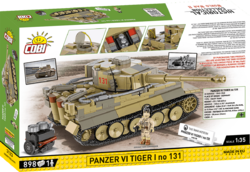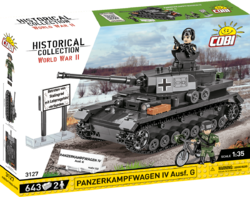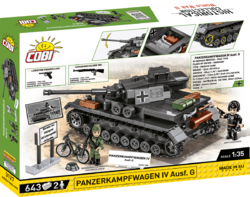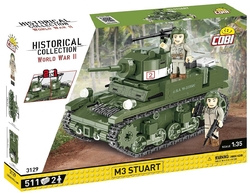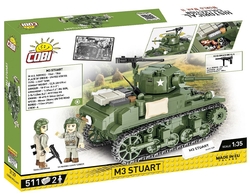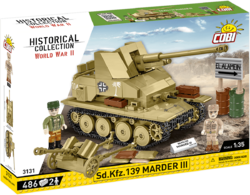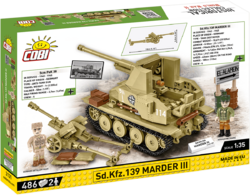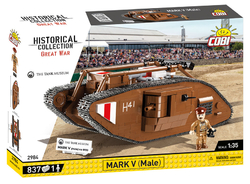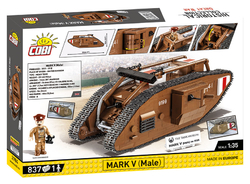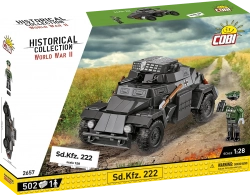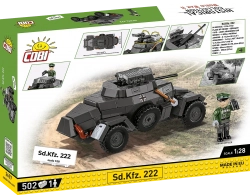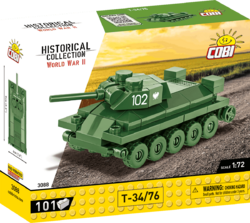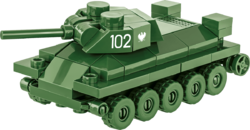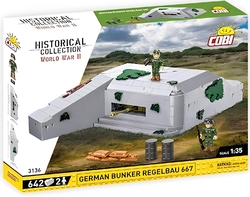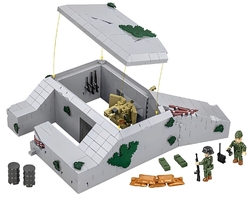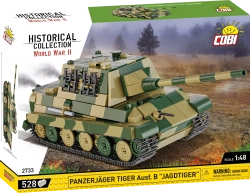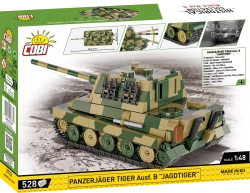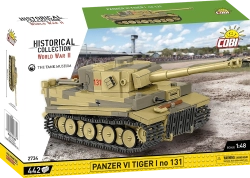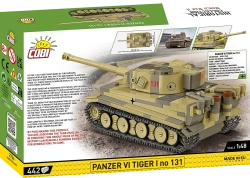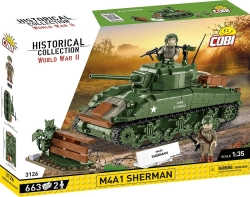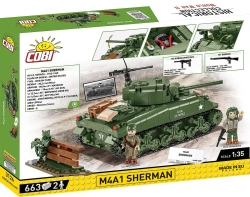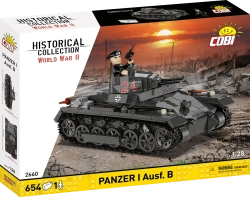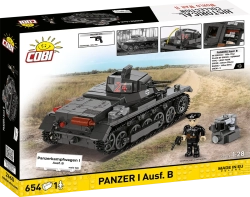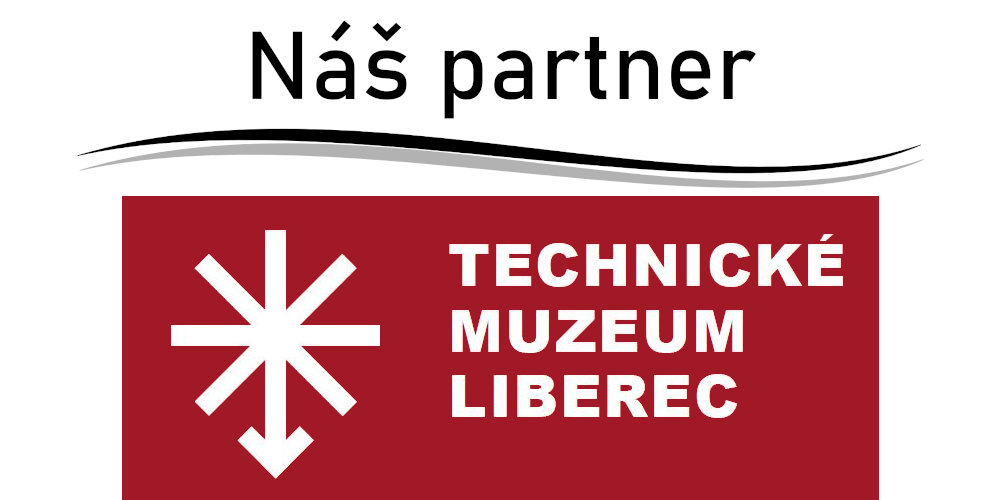A model kit of the famous German tank TIGER I, registration number 114, in the field camouflage of the Western Front. The assembled model has a rotating turret, adjustable gun elevation. The tank's tracks are functional and the model can be easily driven on non-slip surfaces. The 2in1 kit contains two sets of identification marks and the model can be finished with German or French insignia. Models in 1:48 scale bring the same joy, but more space on the shelf.
Show more
0 %
(0 Ranking)
799 Kč
pcs
Add to Cart
In stock - ready to ship
| List Number: | COBI-2735 |
| EAN: | 5902251027353 |
| Warranty: | 24 months |
| Manufacturer: | COBI |
| Loyalty Points: | 12 |
| Price excluding VAT: | 660,07 Kč |
Description
Parametres
Files and Links1
Discussion
Reviews

Did you know: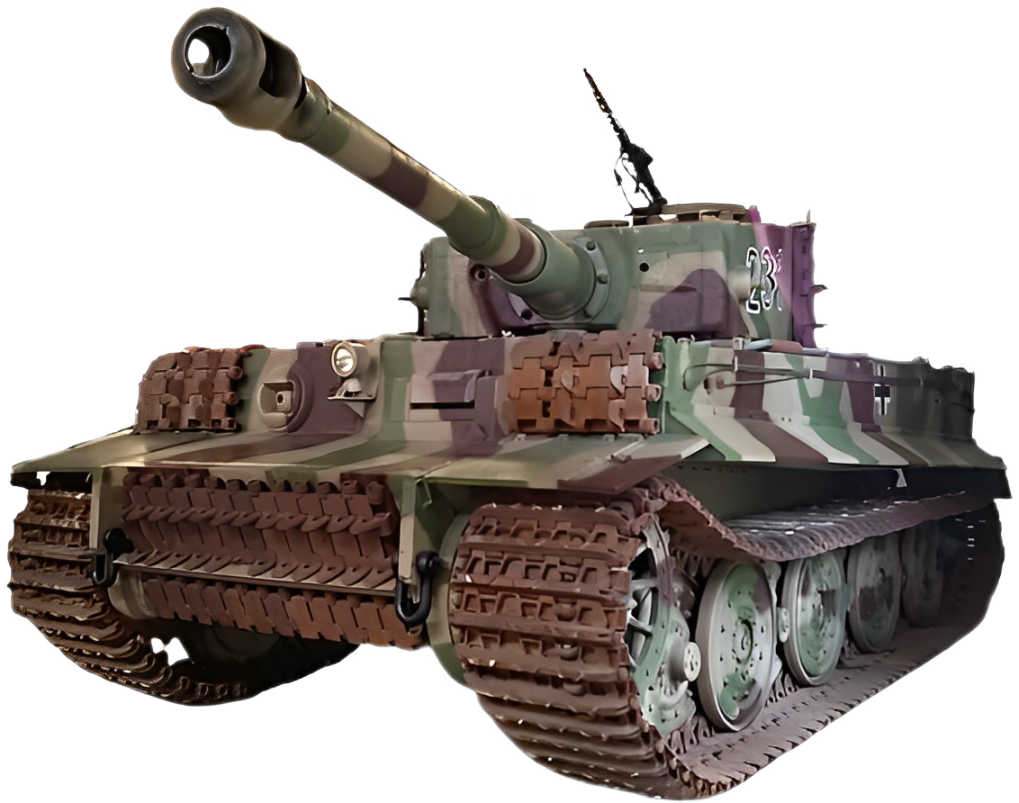
- The development of the famous tank began in 1937 when the Henschel company worked on a prototype designated VK 65.
- Four years later, however, an event occurred that immediately halted work on the VK 65 prototype. At the end of November 1941, German designers got their hands on an undamaged captured Soviet T-34 tank. The engineers and military officials present were shocked. Work on the VK 65 prototype was immediately terminated, and the companies Henschel and Porsche were tasked with developing a tank capable of countering the Russian threat.
- The first dynamic demonstrations were presented to Hitler at a tank training ground in April 1942, and the German leader immediately ordered their production.
- Henschel’s prototype was selected as the more suitable one, but Ferdinand Porsche had not anticipated this. He was so confident that even before the final decision was made, he had already started serial production, leaving 95 unfinished tanks in Porsche factories.
- According to some accounts, Ferdinand Porsche was so furious at the decision that he shouted at the assembled management for nearly four hours, completely demolishing the office furnishings.
- Against this backdrop, the legendary Tiger I tank was born, which at the time outclassed everything it could encounter on the battlefield.
- Its massive armor, enormous firepower, accuracy, and firing range made the German tank a formidable opponent.
- However, the tank also had several significant drawbacks. Its complex construction was difficult to maintain, and not everything could be repaired in field workshops. In bad weather, the overlapping road wheels were a major problem. If mud, for example, got between the wheels, the vehicle became immobilized.
- The Tiger I also had a slower turret rotation, which the Allies later learned to exploit.
- Its fuel consumption was also staggering. Captured German tankers reported that the 567-liter fuel tank barely lasted for 2.5 hours of driving.
- The tank with registration number 114, which is part of the Musée des Blindés exhibition, is one of only six surviving examples in the world.
- Originally, tank 114 was assigned on May 20, 1944, to the 102nd SS Tank Battalion. On the night of August 18 to 19, 1944, it fell into a British ambush near the village of Nécy, and the crew was captured.
- After necessary repairs, the vehicle was incorporated into the armament of the resistance and, under the new name "Bretagne," took part in the liberation of the Saint-Nazaire area.
- A total of approximately 1,347 units were produced in various versions.
Technical specifications: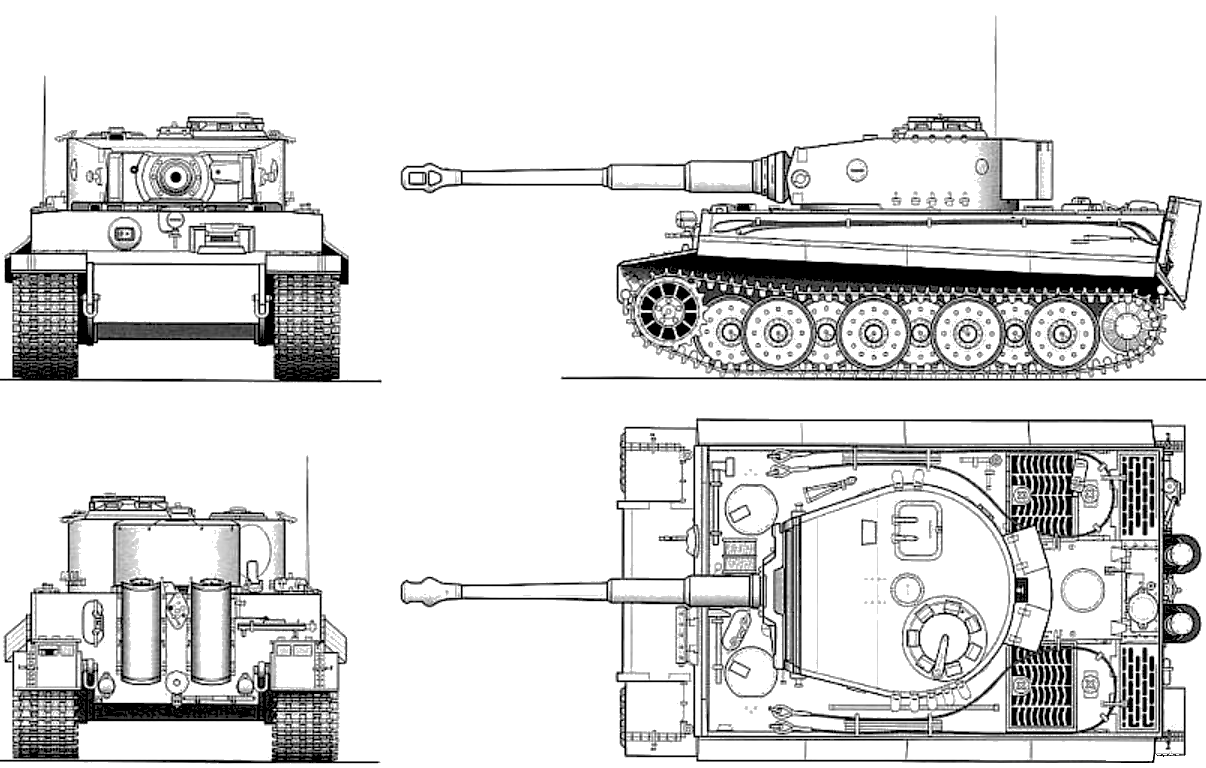
- Dimensions: length 8.45 m (with gun), width 3.56 m, height 3 m
- Weight: 57,000 kg
- Armor: 100 mm chassis and 120 mm turret
- Engine: Maybach HL 230 gasoline 12-cylinder engine with 515 kW output
- Maximum road speed: 40 km/h
- Maximum off-road speed: 20 km/h
- Transmission: 8 forward gears and 4 reverse gears
- Fuel tank capacity: 567 liters
- Operational range: 110 km off-road
- Main weapon: KwK 36 L/56 88 mm cannon (92 rounds)
- Secondary weapon: 2× MG 34 machine guns, 7.92 mm caliber (4,800 rounds)
- Crew: 5
Musée des Blindés:
One of the largest tank museums in the world, founded in 1977 in the town of Saumur, France. The museum holds over 880 armored vehicles in its collection. Only the British museum has more, but due to space constraints, it displays only about a quarter of its exhibits.
Winston Churchill on the Tiger I tank:
“For the Germans, the Tiger is a golden weapon. They constantly try to convince us of its invincibility, and they are right. It is invincible — from the front…”
| Number of figurines | 0 pcs |
|---|---|
| Version (series) | 06/2025 |
| Dimensions after assembly | 18 x 7,5 x 6 cm |
| Scale | 1:48 |
| Box dimensions | 32 x 20 x 7 cm |
| Package weight | 450 g |
| Recommended age | 8+ |
| Number of pieces | 870 pcs |
| Compatible with other brand of kits | No |
| Contains luminous blocks | No |
| Material | Plastic |
| Collection | World War II |
Discussion is empty.
There is no review for product yet









